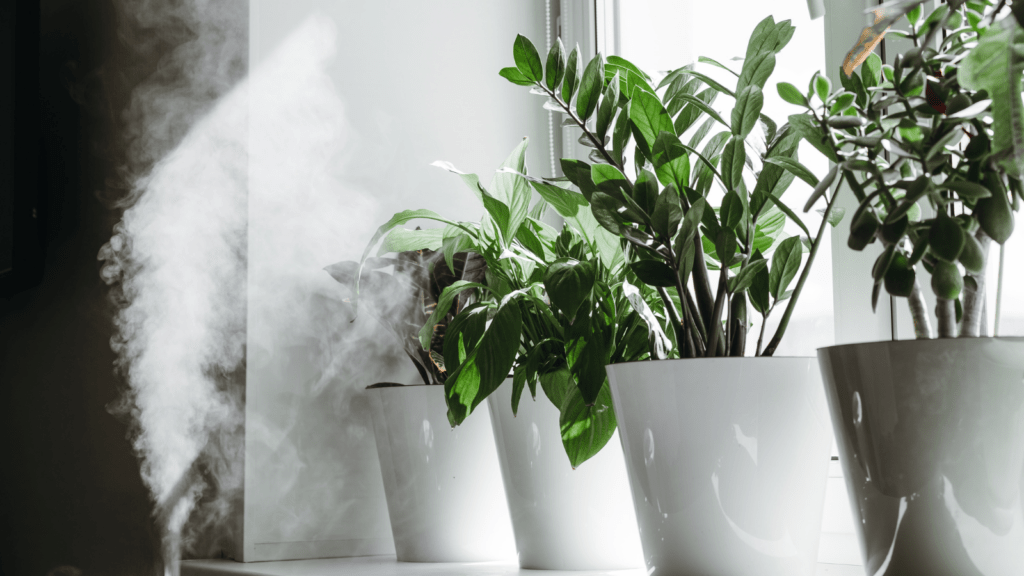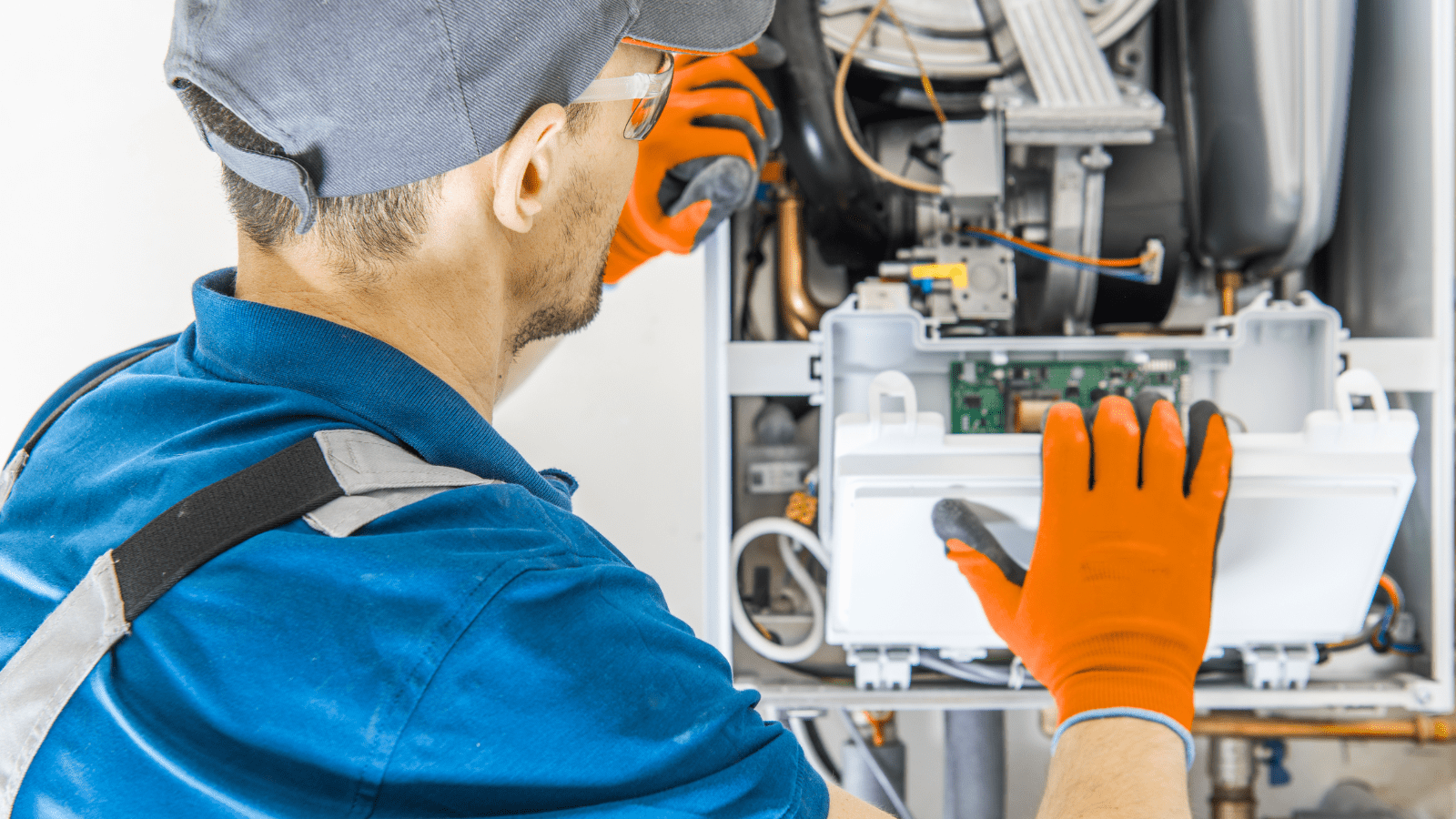Did that sharp pain in your throat this morning leave you wondering if you’d come down with strep during the night? Is your skin crawling with itchy, flaky discomfort? While it is true that sickness is always “going around” during the winter months, the far more probable instigator of your current symptoms is your home’s climate control system.
While our heating systems can be a lifesaver when the temperature starts to drop, they also take a toll on our indoor air quality by sapping the moisture right out of the air. The HVAC professionals at Ideal Heating and Air have solutions that can put you back in charge of climate control and will keep you comfortable all winter.
Isn’t humidity a bad thing indoors?
You may be reluctant to try deliberately adding humidity to your home because you’ve heard of the devastating effects of mold in homes, which thrives in a warm, moist environment. To avoid this health hazard, ideal humidity for an indoor environment is estimated to range between 30%-50%.
What impact does dry air have on us?
The impacts of dry air are potentially numerous, from the irritation of dry sinuses to expensive damage to valuables. Consider these many valid reasons to mitigate dry air in our homes.
Your Body is at Risk
Our respiratory system does not function well without moisture, leaving us susceptible to asthma flare ups or bronchitis. Our nasal passages dry up, making it more difficult to trap the viruses looking for a winter home, and that makes us more susceptible to illness.
Other parts of our bodies dry out in low humidity, including our eyes, which lead to irritation and discomfort. Dry skin is itchy flaky skin, and as it worsens, it may lead to cracking and peeling, especially on your hands and face.
Dry air is not good for many of our household furnishings, leading to drying and cracking or possible warping. Musical instruments and antiques can be especially susceptible.
Your Home is at Risk
The dry air of your home can have a similar impact on your furnishings to what it does on your body. Do you have wooden furniture? Hardwood floors? Wallpaper? They are all at risk. Furnishings can shrink and crack, and those valuable antiques are particularly susceptible. Floorboards contract and warp, leaving gaps and potential damage. Around the house, doors don’t close properly, cabinets don’t latch, and wallpaper begins to peel away from the wall.
Drier air also carries more charged particles, leading to those irritating zaps of electrostatic discharge. Not only can they be a nuisance, but they also have the potential, which can be harmful to your devices.

How Can We Increase Humidity in Our Homes?
From simple DIY hacks we can do right now to improve our home’s climate control to permanent solutions through your service professionals at Ideal, we’ve got options. Choose the ones that work best for you and begin to breathe easier right away.
1. Consider adjusting your thermostat down by a couple of degrees and layering warmer clothes. Not only will this help you maintain a more comfortable humidity level, but you will also save money on your energy bill.
2. Purchase houseplants, especially those that require frequent watering. Houseplants add more than just aesthetic appeal to our homes. Plants naturally release small amounts of water vapor that can help add that moisture you crave into your living spaces. They also make great air filters, removing unwanted guests, such as mold and bacteria. However, even houseplants struggle with extremely dry air, so if you see the edges of your plants beginning to turn brown from the dryness, use a spray bottle mister to spritz those leaves frequently until they recover.
3. In a pinch or to elevate humidity levels quickly, place a pot of water on the stove and set it to boil. Keep an eye on the water’s evaporation progress, and don’t let that pot get completely empty.
4. Gain needed humidity from completing household tasks. Leave the bathroom door open when you use the shower- and consider leaving the exhaust fan off. Cook stovetop meals instead of using the oven. As your food cooks, moisture is released into the air. When you wash dishes, open the dishwasher door after the rinse cycle is completed. As the dishes air dry, they’ll add moisture to the air. The same is true with laundry. After washing your clothes, hang them to dry clothesline-style. These humidity- enhancing steps come with the added bonus of saving you money.
5. Strategically place bowls of water around your home. Be sure to place these where they are not likely to be knocked over as you go about your daily life. As the water slowly evaporates, it will add moisture into your dry home. If you have radiators, the bowls of water can be placed directly on top of them.
6. Purchase a plug-in humidifier. Humidifiers work well for a single enclosed room, and are especially popular in bedrooms for a comfortable night’s sleep. Note that proper cleaning and care is vital to keeping the humidifier at peak performance, and without it can begin to grow mold, and a host of new challenges to overcome.
7. Has it been a while since you’ve had your furnace inspected or checked your home’s weatherstripping for adequate sealing? If so, you may learn that you’ve been fighting a losing battle as cold, dry air has been seeping in.
8. If you’re ready to defeat dry air once-and-for-all, it may be time to install a central humidifier that works in conjunction with your existing furnace or HVAC, one that can be installed by your service professionals at Ideal Heating and Air.
Monitor Humidity Levels for Optimal Climate Control
Unfortunately, when it comes to humidity, there can be too much of a good thing. Humidity over 50% can create a whole new set of problems. Water saturation of wooden objects, such as that same furniture and flooring that was at risk from overly dry air, can cause damage as well. If levels creep over 50%, it’s time to take measures to reduce the humidity in your home. How can you know the humidity level in your home? It’s as simple as purchasing a small device called a hygrometer, which can measure the moisture in the air and give you an instant reading.
For True Winter Comfort, Call on Us
At Ideal Heating and Air, your safety and comfort are our priorities. Let us help you make your home a cozy, healthy sanctuary during these cold winter months. We are a full-service installation and maintenance provider, so whether you need dry air solutions or have any other HVAC needs, give us a call and schedule a consultation today.




